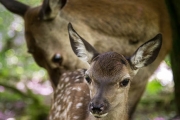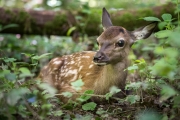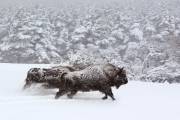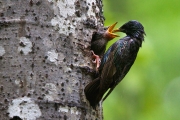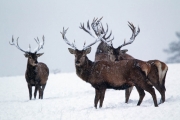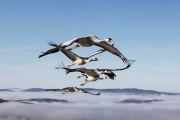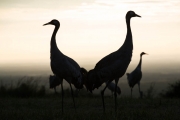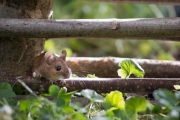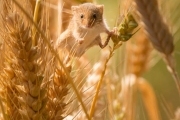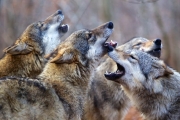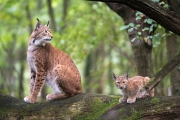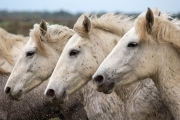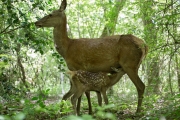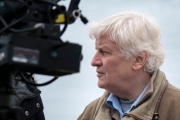![]() Presentation by and discussion with director Jacques Perrin, music composer Bruno Coulais and executive producer Olli Barbé
Presentation by and discussion with director Jacques Perrin, music composer Bruno Coulais and executive producer Olli Barbé
Jacques Perrin and Jacques Cluzaud invite us on an extraordinary trip through time to rediscover the European territories that humans share with wild animals from the time of the last Ice Age to today. After a deep winter lasting more than 80,000 years, within a short space of time an immense forest covers the entire continent. With this new planetary configuration, everything is unsettled. The cycle of seasons is put in place, the landscape reshapes itself, fauna and flora evolve. And history begins. . . Succeeding an interminable Ice Age, a deep and rich forest appears, and then, under the influence of new humans, a striking countryside. Les Saisons is an unprecedented, sensitive epic that tells the long and turbulent shared story linking man to animals.
Cast & Crew
Directors • Jacques Perrin and Jacques Cluzaud
Directors of Photography • Stéphane Aupetit, Michel Benjamin, Jérôme Bouvier, Laurent Charbonnier, Philippe Garguil, Éric Guichard, Laurent Fleutot, Sylvain Maillard and Christophe Pottier
Screenwriters • Jacques Perrin, Jacques Cluzaud and Stéphane Durand
Producers • Jacques Perrin and Nicolas Elghozi
Executive producer • Olli Barbé
Music composer • Bruno Coulais
Post-production • Christian Guillon
Choose a picture to see the filmography (source : IMDB)
![]()
Humankind grew up with the forests over a period of 10,000 years. They fed us, heated us, and protected us. Better still, they fed into our dreams, our fairytales, and our legends. They are our playground in childhood, and the last free space in our urbanized world. Human beings need trees. But today, the trees need us humans. We are living in a chaotic yet fascinating time. Over a single human lifetime, rural civilization has disappeared. Agriculture has become an industry and the countryside has been almost completely rid of its people, its flowers, its butterflies, and swallows.
We pride ourselves on the ongoing expansion of both French and European forests, which have doubled in terms of their surface area since Napoleon, and at the same time, we are bleeding our tropical and equatorial forests dry. We see the forest as one of our best weapons for fighting global warming, but we are realizing that the majority of the planet’s trees, if they have not already been cut down, are suffering an embolism as the climate becomes too hot, and too dry in particular. These fragile giants will soon no longer be able to help counter the crisis our climate is facing.
We must accept that these wild species are not governed by our rules and calculations, and do not respond to our demands for profitability nor our esthetic criteria. The human race doesn’t just need what the forest produces, it needs the unpredictability of the living world. It needs dreams, adventures, and surprises. Our thirst for perfection is impossible to quench. It needs an adventure playground that corresponds to its immensity. Before any discussion, the Iroquois Native American confederacy would elect one of their members to speak for the wolf, an emblematic figure in their civilization. Who today speaks for the trees and butterflies, the toads and wolves, the elephants and whales, for all these creatures, large and small?
Canadian biologist David Suzuki, a specialist in all things forest, wrote that: “To understand trees, you must understand the forest.” And he finished by calling for a new universal declaration – not a declaration of independence like so many, rather a declaration of interdependence of all living creatures.
Bruno Coulais
For the music for Les Saisons, I wanted to position the film within a natural story. Balancing the musical density with the density of the image was something I was constantly considering, and as such, the music is often perceived in the distance, like songs amidst the sounds of the forest. It colors the soundtrack with a certain melancholy because it does not comment on the situation. It also marks the time and the immutable changing of the seasons with bell chimes, marimbas, vibraphones, music boxes and light strumming of harps and strings. I arranged the orchestration to fit with the spatialization, with echoes of woodwind, percussion and strings.
Prospecting for fabulous images
Mammoths wandering around Paris; whales, dolphins and seals swimming up the Seine; aurochs bellowing in the forests of Burgundy; sturgeons blocking the Rhone; ibex dancing in the creeks near Marseille; sudden rain showers making for enchanting summer evenings… We collected thousands of these stories as we made our way through books and research centers, meeting scientists and seeking out ever more points of view. We are prospectors, looking for fabulous images.
To recount 20,000 years of the history of Europe’s wild animals, we took the time to linger in the vast universe of the sciences, the time to think, to dream, and to fool ourselves. Is it even possible to make a movie on a subject of which one is not a complete master? One probably needs to be properly crazy to launch oneself into such an adventure. Every film is a gamble, with enthusiasm as one’s only guide. And Les Saisons is doubly risky because we added a temporal dimension to the spatial one. One must dare to get lost in order to find oneself. Our screenplay remained open to the unforeseen, to doubt, and to surprise for as long as possible. There was maximum liberty with the writing.
On paper, anything is possible. And we retained that freedom right up to the editing, which made the work of all those handling the schedule, managing the budget, scouting locations, and working with animals all the trickier. Entire scenes might disappear overnight, reducing all their efforts to nothing. In particular, we spent a lot of time on location, with wild animals, trying to capture that magical moment. Nature is a set where you can’t take control of the lighting. You have to wait, arm yourself with patience, and blend into the scenery.
Not knowing where you are going is the only way to preserve intact the curiosity that has been driving us since the start, the desire to get a closer view. It’s about understanding creatures that are sometimes very close and which also express themselves, feel things, quiver with desire or fear, and share our territory and our history. Something happens around us that makes it worth worrying a little, lingering a while, and experiencing it is always enriching. To get that emotion across, we have to abandon our position as distant observer and look straight down into it, to participate in a movement of life itself, plunging into the heart of the action, among those creatures we are “observing”, and live the world they are in just as they do.
Press Kit “Les Saisons”
English ~ 26 pages ~ 1,4 Mo ~ pdf
Press Kit “Les Saisons”
French ~ 24 pages ~ 84 Mo ~ pdf



